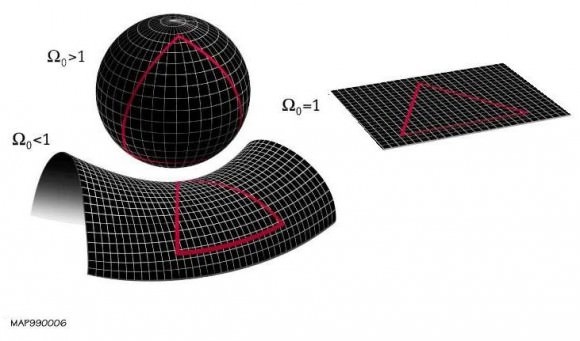[/caption]
The recent WiggleZ galaxy survey data further confirming that the universe is expanding with a uniform acceleration prompted a lot of ‘astronomers confirm dark energy’ headlines and a lot of heavy sighs from those preferring not to have the universe described in ten words or less.
I mean how the heck did ‘dark energy’ ever become shorthand for ‘the universe is expanding with a uniform acceleration’?
These ‘dark energy confirmed’ headlines risk developing a popular view that the universe is some kind of balloon that you have to pump energy into to make it expand. This is not an appropriate interpretation of the dark energy concept – which only came into common use after 1998 when Type 1a supernova data were announced, suggesting an accelerating expansion of the universe.
It was widely accepted well before then that the universe was expanding. A prevalent view before 1998 was that expansion might be driven by the outward momentum of the universe’s contents – a momentum possibly established from the initial cosmic inflation event that followed the Big Bang.
Current thinking on the expansion of the universe does not associate its expansion to the momentum of its contents. Instead the universe is thought of as raisin toast dough which expands in an oven – not because the raisins are pushing the dough outwards, but because the dough itself expands and as a consequence the distance between the raisins (i.e. galaxies etc) increases.
It’s not a perfect analogy since space-time is not a substance – and, at the level of a universe, the heat of the oven equates to the input of energy out of nowhere – and being thermal energy, it’s not dark.
Alternatively, you can model the universe as a perfect fluid where you think of dark energy as a negative pressure (since a positive pressure would compress the fluid). A negative pressure does not obviously require additional contents to be pumped into the fluid universe, although the physical nature of a ‘negative pressure’ in this context is yet to be explained.

The requirement for dark energy in standard model cosmology is to sustain the observable flat geometry of space – which is presumed to be sustained by the mass-energy contents of the universe. Too much mass-energy should give a spherical shape to space, while too little mass-energy should give a hyperboloid shape.
So, since the universe is flat – and stays flat in the face of accelerating expansion, there must be a substantial ‘dark’ (i.e. undetectable) component. And it seems to be a component that grows as the universe increases in volume, in order to sustain that flat geometry – at least in current era of the universe’s evolution.
It is called ‘energy’ as it is evenly distributed (i.e. not prone to clumping, like dark matter), but otherwise it has no analogous properties with any form of energy that we know about.
More significantly, from this perspective, the primary requirement for dark energy is not as a driver of expansion, but as a hypothetical entity required to sustain the flatness of space in the face of expansion. This line of thinking then begs the question of just what does drive the accelerating expansion of the universe. And an appropriate answer to that question is – we haven’t a clue.
A plausible mechanism that accounts for the input of energy out of nowhere – and a plausible form of energy that is both invisible and that somehow generates the production of more space-time volume are all required to support the view that dark energy underlies the universe’s accelerating expansion.
Not saying it’s impossible, but no way has anyone confirmed that dark energy is real. Our flat universe is expanding with a uniform acceleration. For now, that is the news story.
Further reading:
Expansion of the universe
Shape of the universe

